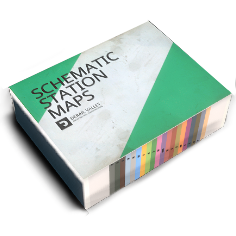Traction Overview
With rail vehicles, traction can be described as the property of the vehicle's wheels to maintain torque on rails without slipping, whether it is by accelerating or braking. This property depends on a number of factors, including the weight of the vehicle, number of powered axles, load rating, track grade and weather conditions.
Most rail vehicles are designed to function without loss of traction in dry conditions, but the rails become slippery when wet. In wet conditions, gentle applications are advised when accelerating and braking, especially on grades.
Loss of traction causes wheels to either slip or slide. Apart from notable damage to wheels, poor traction judgement can also lead to severe collision damage and derailments.
Most cabs are equipped with an indicator for traction loss, commonly a blinking warning light and sometimes with a buzzer too.
In most situations, using a sander can help increase traction. There are cases where adding a slug to the train can help, too.
Vehicles that can carry significant amounts of fuel or cargo onboard, such as steam locomotives, may experience drastic differences in traction depending on their load.
